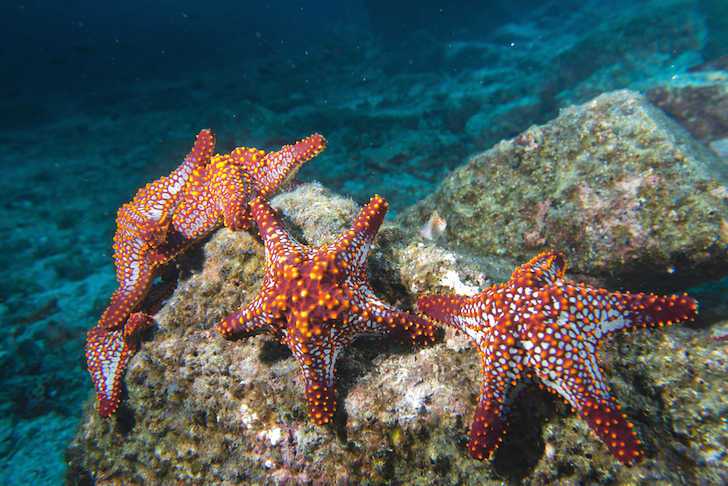Redwood Chapter Conservation Chair
How do we survive a pandemic? The wrong answer is, of course, to ignore it. Be a wishful thinker, fill your life with distractions, and go on as usual. A price will be paid for that, as it will for the thousands of young people, and the people they came into contact with, who crowded Florida beaches for the spring break. Yet we can hardly blame them as leaders downplayed the contagion while local bars and businesses filled their coffers.
After all, the meeting of shore and sea is an endless wonder--, an enchanted sand castle, a place to tan, mingle and meet-up. For many of us it is a place of respite from the world, to be calm, to gather thoughts, memories, and dreams. But now, so much love for a place, by so many people, holds so much danger.
Beyond the beach in our blue waters another epidemic has been raging for the last seven years. Marine scientists call it the Sea Star Wasting Syndrome. There have been outbreaks in the 1970’s on the East Coast and southern California and Baja, but it first appeared off our coastal waters in 2013 when warm currents replaced our normally cold, and very productive upwelling. Suddenly, all along the west coast and north into Alaskan waters, several species of sea stars (commonly called star fish), began to literally waste away, starting first with white lesions, followed by decay of tissues, loss of limbs and ultimately a mushy corpse. 
The huge sea star die off is horrible enough, but it also reverberates throughout the coastal ecosystem. Sea stars are veracious predators and they have an appetite for sea urchins. Urchin populations exploded with the decimation of the sea stars. Sea urchins live in our wondrous kelp forests, a kind of underwater mirror of our great redwood forests with kelp canopies and understories providing rich habitats for dozen of species. Purple sea urchin ravaged the kelp forests clear-cutting the ecosystem, turning it into a bare sea floor blanketed by starving urchins. And in destroying the kelp forests, the urchins also knocked out those species dependent on it, most famously the red abalone.
The worst years of this epidemic were the warmest water years of 2013 to 2016. In some places, sea star populations have somewhat rebounded, with both healthy and diseased sea star species being observed along the coast from California to British Columbia in 2019 according to UC Santa Cruz marine biologists. Yet they also report divers along the coasts of California and Oregon in mid-2019 show only 26 observations from 15 sites of Sunflower Stars, Pycnopodia helianthoides, down from 79 observations from 26 sites the previous year. Prior to 2013, hundreds of Sunflower Stars could be found at some of these same sites.
The cause of the epidemic still isn’t clear, though some scientists believe a virus may have washed through some populations of sea stars. But the common thread through this attack on sea star species is the unusual ocean warming that seems to have magnified its incidence and virulence, ocean warming that many scientists believe is related to climate change.
So back to the question, how do we survive a pandemic? The sea stars and the other sea creatures linked in our coastal ecosystem, have no power to change their fate. Their future depends on whether nature remains resilient and on the choices the human species makes. These choices depend on how much we care.
The pandemic that our species now faces us calls out for a daily reality check, what is important, what is not. What must be done, what we should not do. We must face fear, as Alan Watts said, “When you see a ghost walk into it.” And most of all we must care, for ourselves and each other, and this planet, lest it waste into barrens.
Tom Roth lives on the Sonoma Coast and chairs Redwood Chapter's Conservation Committee.